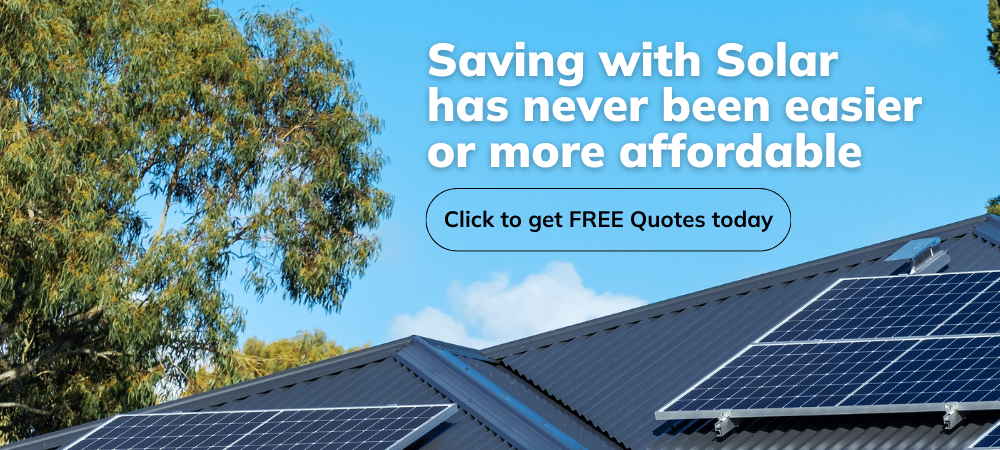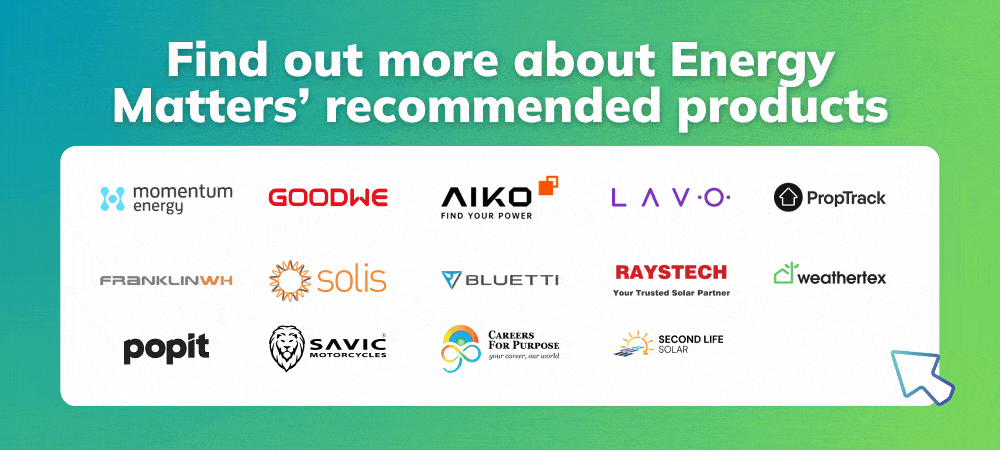Whether you’re simply curious about electric vehicles (EVs) or are in the market for one, you may be wondering how they work. Don’t worry, we’ll walk you through it! Here we’ll explain everything from how an electric car engine works to how to charge an EV. We’ll also discuss the different types of EVs, an EV’s range and explore how much it costs to charge an EV with both grid and solar power.
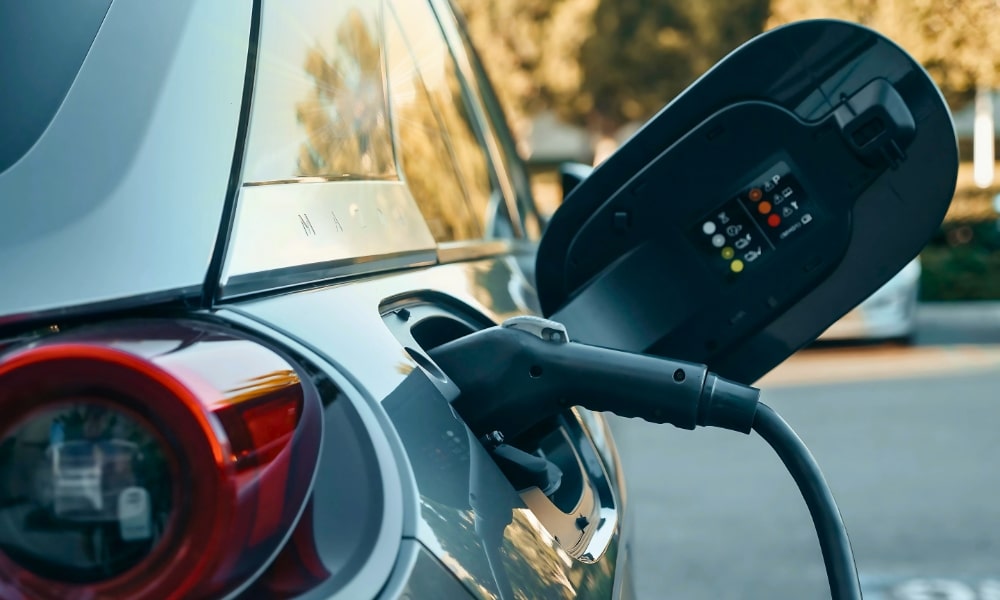
For those intrigued by the prospect of aligning their journey with a greener future, consider obtaining FREE solar quotes from Energy Matters.
This seamless integration of electric mobility and sustainable energy sources adds a layer of environmental consciousness to the evolving narrative of transportation.
On this page
How does an EV engine work?
At its core, an EV applies the same basic principle as any other vehicle. It uses a source of stored energy to turn wheels via a motor.
Unlike traditional petrol or diesel cars, EVs get their power from batteries which store electricity. This electricity is then sent to an electric motor and converted into kinetic energy that creates enough torque to turn a driveshaft, resulting in motion.
Delving deeper: Electric car systems explained
To truly grasp how EVs work, exploring the interaction between these key components is essential. A signal is sent to the motor controller when the driver presses the accelerator pedal.
- The motor controller draws power from the battery, which the inverter regulates.
- The inverter converts the DC power to AC and sends it to the electric motor.
- The electric motor spins, transferring power through the single-speed transmission to the wheels, propelling the vehicle forward.
Regenerative braking is another crucial aspect of electric car systems, explained. The electric motor acts as a generator when the driver decelerates or lifts their foot off the accelerator. This process captures kinetic energy that would otherwise be lost as heat in traditional brakes and converts it back into electricity, which is then fed back into the battery, increasing efficiency and range.
What are the main parts of an EV?
One of the major benefits of an EV is that it has significantly fewer components than an ICE (Internal Combustion Engine) car – in fact, EVs have 90% fewer moving parts.
Below is a breakdown of the main parts of an EV:
- Electric Engine/Motor: uses electricity saved in the battery to cycle the motor and generate the power necessary for driving. It can be DC/AC type, however, AC motors are more common.
- Reducer: reduces the motor’s RPM to generate an appropriate level of force.
- Power Inverter: Converts Direct Current (DC) power from the batteries into Alternating Current (AC) power.
- Transmission: EVs have a single-speed transmission that sends mechanical power from the motor to the wheels.
- Controller: The Power electronics controller determines the working of an electric car.
- Battery: Stores the electricity required to run an EV. The higher the kW of the battery, the higher the range.
- Charge Port: Plugs into an outlet or EV charging point to charge the battery.
- Onboard Charger: An onboard charger is used to convert the AC supply received from the charge port to a DC supply.
- Thermal system (cooling): This system maintains a proper operating temperature range of the engine, electric motor, power electronics, and other components.
Did you know Energy Matters is Australia’s largest renewable news, blog and educational resource? Subscribe to Energy Matters’ weekly newsletter and keep updated even with incentives, rebates and recommended solar product offers.
What types of EVs are there?
There are three main types of EVs:
Battery Electric Vehicles (BEVs): These battery powered vehicles are all-electric cars that are powered exclusively by electricity. BEVs need to be plugged into an outlet or charging station to recharge. This type doesn’t use petrol or diesel to run so doesn’t produce any emissions like traditional cars. The information on this page will mostly relate to this type of EV.
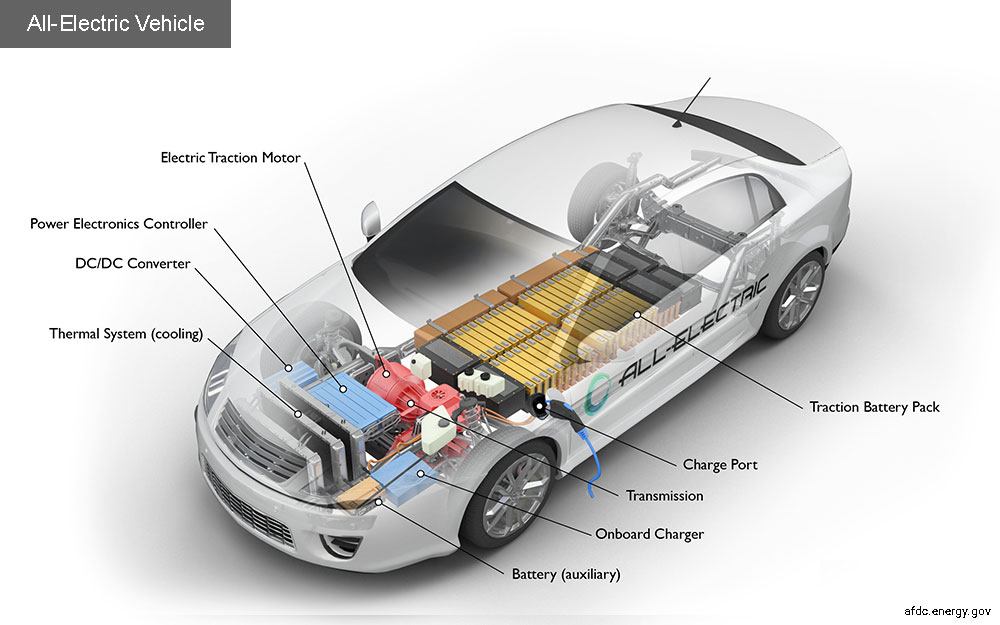
Plug-in Hybrid Electric Vehicles (PHEVs): These have both a battery and a petrol tank. They can be plugged in to charge the battery, but if the battery runs out, the petrol engine will take over.
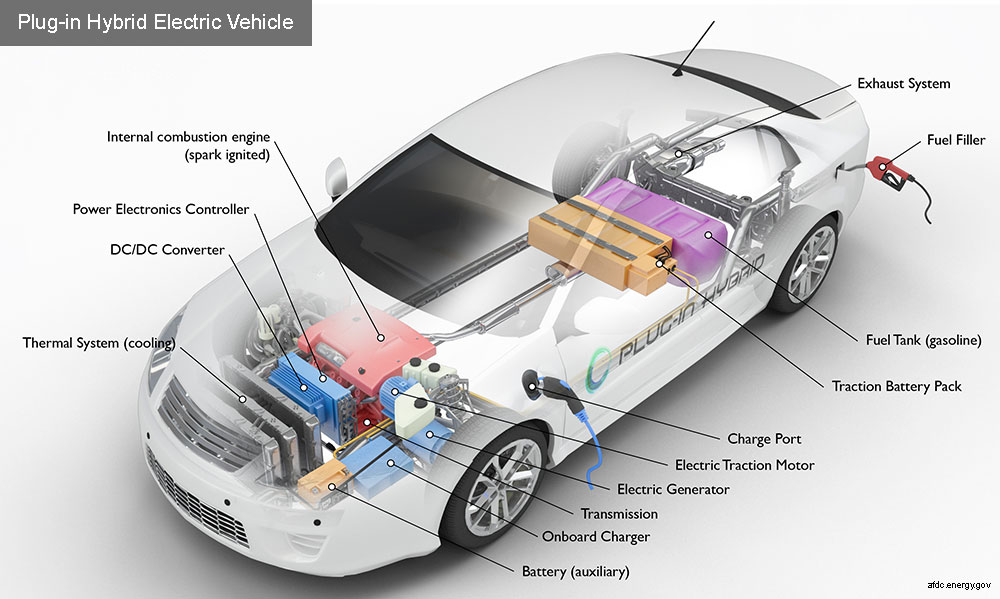
Hybrid Electric Vehicles (HEVs): These have both a battery and a petrol tank, but the battery cannot be plugged in to charge. Instead, it charges itself while the car is moving through a process called regenerative braking.

What are the benefits of EVs?
Some key benefits of owning an EV include:
Reduced running costs: according to the EVC, powering an EV is around 70 per cent cheaper compared to a car with an internal-combustion engine powered by petrol or diesel, saving EV drivers, on average, $1600 in fuel costs each year. These savings can be even deeper for households with rooftop solar installed, as EV owners can charge their vehicles from their own electricity generated during the day.
Reduced maintenance costs: EVs are cheaper to maintain than petrol-powered cars and don’t require oil changes, spark plugs or exhaust systems. With fewer moving parts in an EV compared with a traditional car, there are also less components that break down over time and need to be replaced.
No emissions: Electric vehicles produce zero emissions, which is great for the environment and can help improve air quality in urban areas.
Quieter driving experience: EVs are much quieter than petrol cars, making them a more pleasant drive for both the driver and passengers.
What are the 3 disadvantages of an electric car?
Limited charging infrastructure: Despite Australia’s efforts to expand its electric vehicle (EV) charging network, the country still faces a significant disadvantage in terms of limited charging infrastructure. While major cities offer a decent number of charging stations, remote areas and intercity travel routes suffer from a lack of accessibility. This limitation can lead to range anxiety for EV owners, as they may struggle to find convenient charging points for longer journeys.
Higher purchase cost: Electric cars in Australia still tend to come with a higher purchase cost compared to their gasoline-powered counterparts. Although the gap has been narrowing over time, the initial investment required to own an electric vehicle can be a significant disadvantage for many consumers. While EVs offer lower running costs and potential government incentives, the upfront expense can discourage potential buyers, particularly those with budget constraints.
Longer refuelling time: Charging an electric vehicle takes considerably longer than refuelling a traditional petrol or diesel car. Even with fast-charging options, the time required to fully charge an EV battery can be a notable inconvenience, especially during long road trips. This aspect can limit the flexibility and spontaneity of travel plans, as EV owners must plan their journeys around charging breaks and may experience delays if charging stations are occupied or out of service.
What are the common misconceptions about EVs?
A part of understanding how electric cars work is familiarising yourself with common misconceptions that could hinder your decision-making. Some of them are:
- EV charging is free: As mentioned in this article, EVs can be charged at public charging stations, often located in shopping centres. However, this is not free because most public chargers require payment via an app. Some businesses will offer free charging, but this will be on a case by case basis and we recommend calling ahead if you plan to use a charger located at a place of business.
- EVs can be charged on a household socket overnight: You can plug in your vehicle to your regular home socket, but it will take between 18 – 24 hours to fully charge. A better solution is to get a dedicated EV home charger that will make EV charging much faster, often in as little as 4 hours.
- EVs don’t require service: It’s easy to assume that, due to their lack of an engine, EVs don’t require servicing. The truth is EVs still consist of moving parts that need regular maintenance. It also contains consumables, such as windscreen wiper blades, cabin filters, and more, that may need to be replaced over time.
How electric cars work isn’t that complicated. Let this guide help you make the most out of your EVs or help you get the right one for you.
Are you ready to convert your next car to an electric vehicle (EV)? Book a test drive now in one of the newest electric vehicles in your location!
Are EVs good for the environment?
Now that you know how electric cars work, the question now is, are they really good for the environment?
Electric vehicles are a better alternative to traditional cars. However, the manufacturing process of EV batteries produces emissions, whilst the raw materials used for them have been linked to environmental concerns.
In general, EVs have fewer emissions compared to ICE vehicles, but this still depends on the amount of coal produced for the electricity that powers EVs.
EV batteries: capacity and kWh explained
The capacity of an EV battery is typically expressed in kilowatt-hours (kWh). This is the amount of energy that can be stored in a battery, and it’s important to understand this when considering which electric car to buy.
For example, a 64 kWh battery pack will have twice the capacity of a 32 kWh battery pack and will therefore be able to store and use twice as much energy from a single charge. This also means that it will have a greater range before needing to be recharged.
An EV will travel roughly 6km for every kWh of charge.
EV range
An EV’s range is the maximum distance it can travel on a single charge. The more energy a vehicle’s battery can store, the longer its range, but this will vary based on factors that impact its efficiency. Factors can include the battery electric vehicle itself design (weight, shape, size, etc.), as well as how it’s being driven (e.g. terrain, speed, driver behaviour, passenger load, etc.).
Efficiency (and therefore range) also varies according to the outdoor temperature – as a general rule, you can expect an EV to have a shorter range in the dead of winter and the peak of summer due to auxiliary heating and cooling (i.e. heating and cooling the vehicle cabin and battery).
An EV’s officially listed range, while useful, is best taken as a guideline. The ideal EV range for you will allow you to go on your normal journeys without having to stop and charge up halfway through.
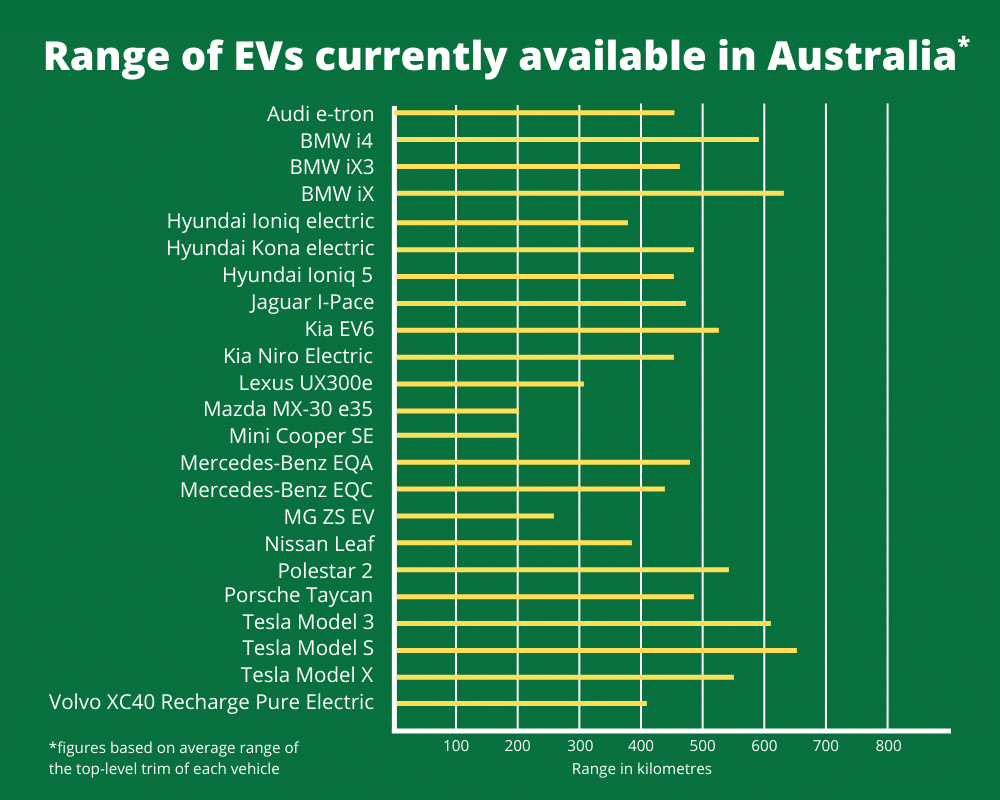
How does EV charging work?
Charging an EV can be as simple as plugging in your phone to charge. But, of course, there are a few more details to consider when it comes to charging an electric car.
In Australia the standard plugs used are Type 2 (Mennekes) plug for AC charging and both the CCS and CHAdeMO for DC charging.
Most EVs can be plugged into a standard 240-volt home outlet using an adapter (EVSE). This will charge your vehicle, albeit very slowly.
Learn more about how EV chargers work in our comprehensive guide.
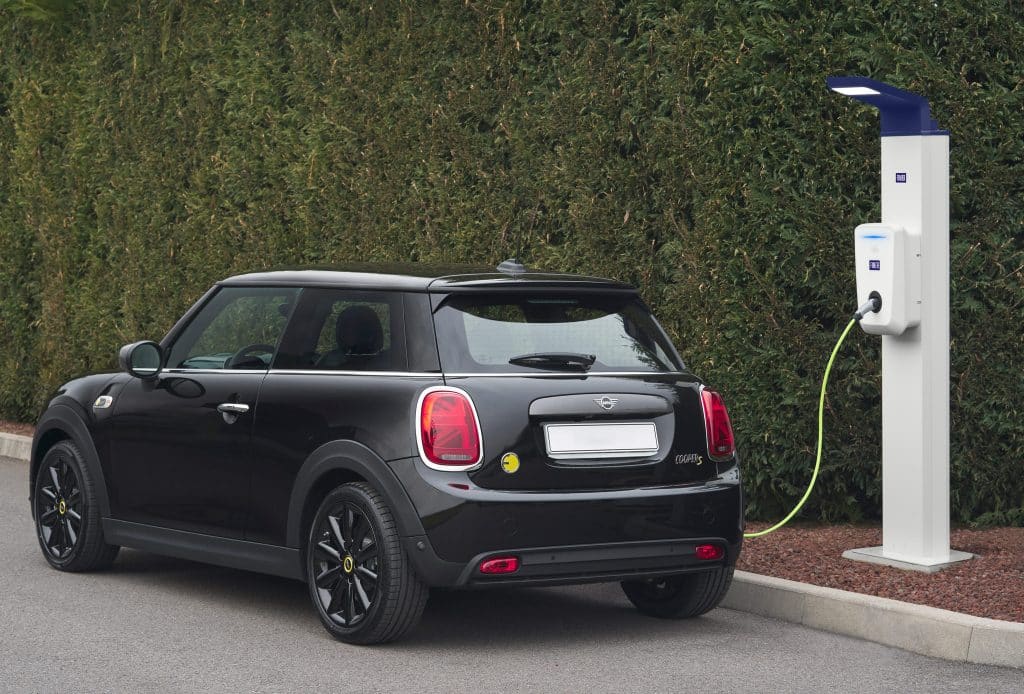
What does it cost to charge an EV?
As mentioned previously, an EV will travel roughly 6km for every kWh of charge. In comparison, a typical petrol-driven car will use about 0.60 litres of fuel to travel the same distance (assuming an average fuel efficiency of 10km/L).
To travel 100km, a typical EV would need 16.67 kWh of electricity, which would cost approximately $4.50 in grid electricity (based on an average electricity price of $0.27 per kWh).
In contrast, a petrol car travelling the same distance would use about 10 litres of fuel. Although fuel costs in Australia are currently hovering around the $2/L mark, we’ll adjust this to a more conservative $1.70/L. This means it would cost $17 to travel 100km in a petrol car.
Therefore, charging an EV is significantly cheaper than fuelling a petrol car.
Charging an EV with solar power
Now, the above figures are based on average grid electricity prices. If you charge your car with rooftop solar-generated electricity or during off-peak periods with a time-of-use (ToU) tariff, you can significantly reduce your charging costs.
Solar power, by far, offers the cheapest form of EV charging.
To work out how much it would cost you to charge your EV with solar, you will need to know your solar feed-in tariff (FiT). This will essentially tell you how much your solar energy is worth per kWh. If your FiT is 8c/kWh, this means that for every kWh of solar power you use to charge your electric car, you’re only paying $0.08. Comparing this to the grid electricity price of $0.27/kWh, it’s easy to see how much cheaper solar charging can be.
Charging an EV on a time-of-use (ToU) tariff
If your home doesn’t have solar panels, or if they’re not generating enough power to cover your EV charging needs, you can still take advantage of cheaper off-peak electricity rates by using a ToU tariff.
ToU tariffs have different rates for electricity usage depending on the time of day you use electricity.
- Peak: Most expensive electricity rates during peak demand periods (i.e. weekdays from 4pm to 8pm)
- Off-peak: Least expensive energy rates, usually overnight and on weekends
- Shoulder: Slightly cheaper rates, typically between peak and off-peak periods
If you can arrange to charge your EV during off-peak periods, you will be using electricity at the cheapest rate. This can result in considerable savings on your charging costs.
How long does it take to charge an EV?
The amount of time it takes to charge an electric vehicle is largely dependent on the capacity of the battery and whether you’re using a standard power outlet or a dedicated EV charger.
There are three EV charger types:
Level 1 (AC Slow Charging)
This is the slowest charger type. L1 chargers are typically only used in homes and can be plugged directly into a standard residential power outlet. This is the out-of-the-box standard that comes with an EV. Given the slow charging rate (a full charge can take anywhere between 20 to 40+ hours), this option may only be tolerable for people with a very short commute or who are only using their EVs for short trips around town.
- Charging Power: 1.4kW – 2.4kW
- Outlet Required: Standard 240-volt AC household socket
- Distance: 7.5km – 15km per hour of charge
Level 2 (AC Fast Charging) – L2 chargers are the most common type of EV charger and are often used in homes, apartment blocks, workplaces, shopping centres and some public charging stations. Purchasing and installing an L2 charger at home typically costs $900 – $2500 for the hardware and $500-$1000+ to install. L2 chargers can usually fully (or mostly) charge your EV overnight (8+ hours).
- Charging Power: Up to 7.2kW
- Outlet Required: Level 2 wall box connected to a standard 240-volt AC household socket
- Distance: About 40km per hour of charge (on a 7.2kw charger)
Level 3 (DC Fast Charging) – L3 EV chargers provide rapid charging rates and can be up to 50x faster than L2 EV chargers. Typically, L3 chargers are only found in public areas (car parks, petrol stations, roadside, motorways, etc) and are designed so that people can quickly recharge their electric vehicle in a matter of minutes using direct current (DC) technology.
- Charging Power: 25kW – 350kw
- Outlet Required: 480-volt Direct Current (requires significant infrastructure)
- Distance: About 180km per hour of charge (on a 25kw charger)
Charging on the go: public charging stations
Public charging stations are becoming increasingly available in Australia, with many shopping centres, car parks and workplaces now offering EV charging bays.
Some public charging stations may require you to pay a fee, while others may offer free charging. Some charging stations offer a free charge up to a certain amount (e.g. 7kWh) and then charge a fee for any additional usage.
To find a public EV charger near you, try using one of these apps:
You can also view public charging stations Australia-wide via the NSW government’s Charging Map.
Read more about EVs:
Are you ready to embrace a greener future by installing an electric vehicle (EV) charger?
Imagine the convenience of having your own charging station, allowing you to power up your EV whenever it’s convenient for you. You can contribute to a cleaner environment and combat climate change by installing an EV charger at your home or business. Energy Matters‘ trusted local solar installers are ready to provide you with a personalised quote tailored to your specific needs.
Don’t wait any longer; request your quote today and be part of the EV charging revolution!









